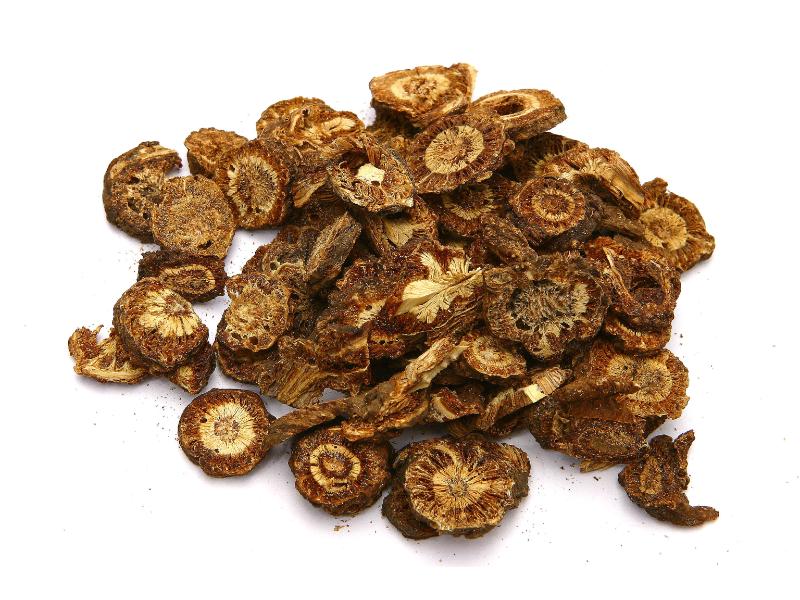Search in medicinals
Notopterygii Rhizoma et Radix
Notopterygium [root]
羌活 〔羌活〕 qiāng huó

Alternate Chinese names: 羌光 qiāng guāng; 胡王使者 hú wáng shí zhě; 羌滑 qiāng huá; 退风使者 tuì fēng shí zhě; 竹节羌 zhú jié qiāng; 蚕羌 cán qiāng
Kingdom: Plant
Origin in PRC Pharmacopoeia: Notopterygium incisum Ting ex H.T. Chang; Notopterygium forbesii Boiss. (PRC Pharmacopoeia)
Origin in unofficial sources: Notopterygium incisum Ting*; Notopterygium forbesii Boiss.* [= N. franchetti Boiss.]; Notopterygium franchetii Boiss.
Use: Medicinal
Category: Exterior-resolving agents / Warm acrid exterior-resolving agents
Properties: Acrid, bitter; warm.
Channel entry: Bladder and kidney channels.
Actions and indications:
- Disperses wind-cold: Common cold due to externally contracted wind-cold, with headache and generalized pain.
- Dispels wind-damp and relieves pain: Wind-cold-damp impediment (fēng hán shī bì) patterns.
Dosage and method: Oral: 3–12g in decoctions.
Warnings: Qiāng huó is very warm and drying. Use with care in yīn-blood depletion and in internally exuberant dryness-heat.
Product description: This is a roughly cylindrical rhizome or varying length, 1–3 cm in diameter. It bears scars left by branch roots, and at the top has a scar left by the stalk. The exterior surface is a blackish brown and is covered with annular nodes, dense at the top and growing scarce further down, that are covered with numerous tumorous shoot scars. This rhizome is light and breaks cleanly. It is cut into thin transverse or oblique slices roughly 1 mm thick. On the cut surface, which is broken by radial fissures, the cortex is brown, the wood is a whitish yellow, and the central medulla is blackish brown.
Quality: Fat rhizomes that have annular protuberances and have a pattern on the cross section resembling a chrysanthemum flower are the best. A strong odor is also a mark of good quality.
Production area: Sìchuān, Gānsū, Qīnghǎi, Shǎnxī (Shaanxi), Yúnnán, Xīnjiāng, and Tibet.
Etymology: The name qiāng huó 羌活 is understood as the dú huó from the land of the Qiāng.
See: Dú huó (独活 Angelicae Pubescentis Radix, pubescent angelica)
Back to search result Previous Next